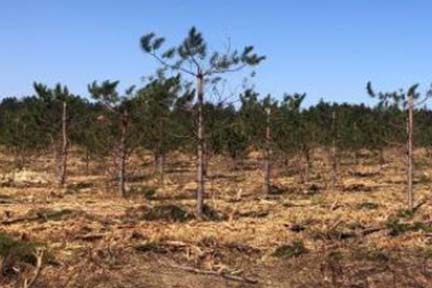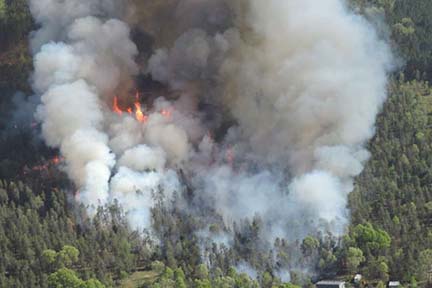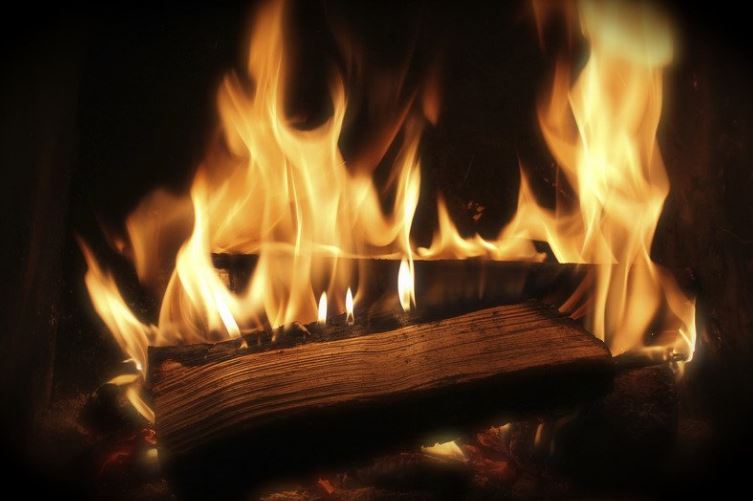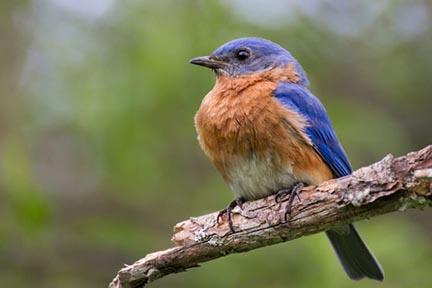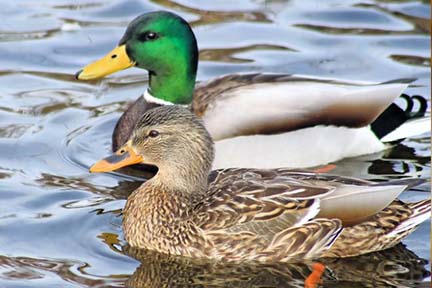| If you’ve been dreaming about the long Memorial Day weekend, we get it! We don’t just take care of Michigan’s natural and cultural resources, we love getting out there and unplugging from everything, too. Ahead of the holiday, the Michigan Department of Natural Resources has some tips to keep everyone safe and maybe discover something new:
Need additional inspiration? Visit our website for more things to do and places to go. Be safe, have fun, and go make some memories!
 Stack up the graham crackers, chocolate and toasted (or burned – whoops!) marshmallows to make the classic s’more, a treat best enjoyed around a crackling campfire. Stack up the graham crackers, chocolate and toasted (or burned – whoops!) marshmallows to make the classic s’more, a treat best enjoyed around a crackling campfire.
But as you stack up wood to prepare your campfire, how do you make sure you toast only the marshmallows, and not the whole backyard or campground? Just as with s’mores, there’s a classic recipe for ensuring a safe fire:
- Build your fire in a campfire ring or space surrounded by bare earth. (In state parks and campgrounds, we provide the fire rings for you! Please don’t build your own.)
- Always keep a water source and a metal shovel nearby.
- Never leave a fire unattended, even for a minute.
- When it’s time to turn in for the night, drench your fire with water, stir the ashes and drench again to make sure it’s completely out.
By minding your campfire, you’ll help keep family and guests safe, as well as the nature around you. Get more fire safety tips at Michigan.gov/PreventWildfires.
Questions? Contact DNR fire prevention specialist Paul Rogers at RogersP5@Michigan.gov. |
 Whether it’s organizing a group kayak trip, packing for a weekend in the woods or just planning a picnic at the beach, getting ready for a long weekend can be complicated. Whether it’s organizing a group kayak trip, packing for a weekend in the woods or just planning a picnic at the beach, getting ready for a long weekend can be complicated.
On the other hand, protecting the amazing places you’ll visit is easy! Just remember three simple words: Play, Clean, Go. The words don’t take up much space – and here’s the great thing: You can use them over and over again, no matter where you go.
Adopting the Play, Clean, Go mindset can help prevent the spread of invasive species on land and in the water. Here’s how it works:
- Play: Swim, hike, fish, run, dance under the stars – however you have fun in the outdoors.
- Clean: Before you leave the trail, campground or shore – shake it out, brush it off, wipe it down or whatever it takes to remove dirt and debris from your shoes, gear and vehicle. If you have a watercraft, remember to drain tanks and bilges, too.
- Go: Head out on your next adventure, invasive species-free!
Whether your plans include off-road vehicle riding, hiking, boating or climbing, get helpful tips tailored to your favorite outdoor pursuits at PlayCleanGo.org/Take-Action.
Invasive insects and plant diseases cost the U.S. an estimated $40 billion a year in damage to trees, plants and crops and related management efforts. They can threaten the economy, food supply, environment and, in some cases, public health.
As you head outdoors, remember that a little bit of prevention can go a long way. Take the time to share these easy steps with friends and family so everyone can do their part to protect our natural spaces.
Questions? Contact Joanne Foreman at ForemanJ@Michigan.gov. |
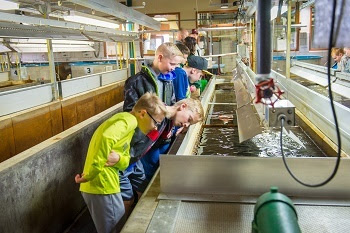 Want a firsthand look at where millions of fish are raised each year to stock lakes and streams across Michigan? Add a stop at a state fish hatchery to your summer travel plans! Want a firsthand look at where millions of fish are raised each year to stock lakes and streams across Michigan? Add a stop at a state fish hatchery to your summer travel plans!
It’s a great time to go: This year the DNR is celebrating 150 years of state fish hatcheries – a system rich with history, and one that helps stock 20 million to 25 million fish in an average year at up to a thousand sites in streams, inland lakes and the Great Lakes.
From southwest Michigan to the Upper Peninsula, there are six state fish hatcheries supporting fish populations throughout the state:
- Wolf Lake State Fish Hatchery’s (Van Buren County) rearing program includes muskellunge, walleye, steelhead and Chinook salmon.
- Harrietta State Fish Hatchery (Wexford County) was put into service in 1901. It is the longest continuously operating hatchery in Michigan, rearing brown and rainbow trout and Atlantic salmon.
- Platte River State Fish Hatchery (Benzie County) rears Chinook and Atlantic salmon and 100% of the coho salmon produced by the DNR. The site also incubates and hatches walleye eggs each spring.
- Oden State Fish Hatchery (Emmet County) was fully rebuilt in 2002, making it the most recently modernized Michigan hatchery. Oden’s current rearing program includes both brood and production fish for the brown and rainbow trout stocking programs.
- Thompson State Fish Hatchery’s (Schoolcraft County) rearing program has included Chinook and Atlantic salmon, steelhead, and brown and rainbow trout in the years since the facility’s 1976 rebuild. Thompson also served as a walleye incubation and hatching station. In 2021, a new coolwater production facility was constructed at Thompson, adding muskellunge and spring fingerling walleye production to the program. Coldwater species currently reared there include Chinook salmon and steelhead.
- Marquette State Fish Hatchery (Marquette County) serves as the brood and sole production facility for all char species stocked by Michigan’s fishery managers. The Arctic grayling brood fish are also held at Marquette. The rearing program includes brook and lake trout and the hybrid splake, a cross between female lake trout and male brook trout.
To plan a visit, refer to individual hatcheries’ hours of operation and call ahead to schedule group tours: Wolf Lake (269-668-2876), Harrietta (231-389-2211), Platte River (231-325-4611), Oden (231-347-4689, ext. 12), Thompson (906-341-5587) or Marquette (906-249-1611).
Learn more at Michigan.gov/Hatcheries. |
 Off-road vehicles are fun year-round, but ORV activity ramps up in spring and summer as many people head to Michigan trails and ORV scramble areas. Off-road vehicles are fun year-round, but ORV activity ramps up in spring and summer as many people head to Michigan trails and ORV scramble areas.
Responsible, informed riding practices should be top priority for everyone, but it’s important to keep in mind that speed and rider inexperience are the primary contributing factors in ORV accidents, serious injuries and death.
All ORV operators are urged to “Ride Right” and keep this important guidance in mind:
- Ride at a safe speed.
- Ride on the right side of the trail.
- Keep lights on when riding.
- Always wear a helmet.
- Ride sober and safe.
- Operate within the limits of your ORV and your own capabilities.
Do your part to ensure everyone returns home safely to family and friends; read more about ORV safety at Michigan.gov/RideRight. For more on where to ride and ORV laws in Michigan, go to Michigan.gov/ORVInfo.
Questions? Contact Cpl. Mike Hearn at HearnM@Michigan.gov. |
 Looking to learn a little something about Michigan’s natural resources this summer? The State Park Explorer Program is a great place to start. Take a hike, catch a fish, look and listen for birds, and get up close and personal with mammal furs and skulls! Looking to learn a little something about Michigan’s natural resources this summer? The State Park Explorer Program is a great place to start. Take a hike, catch a fish, look and listen for birds, and get up close and personal with mammal furs and skulls!
Explorer guides are stationed at 35 state parks and recreation areas around Michigan from Memorial Day through the end of August, and they host a variety of programs featuring each location’s rich and varied natural resources. Park visitors can participate in fun and engaging hikes, games, activities and crafts, all while learning about what makes each park special.
If you have a passion for birds, join us in celebrating them during Michigan’s Feathered Friends Weekend June 16-18, with several state parks featuring bird hikes, bird identification programs and much more.
Explorer guide programs are fun, educational and great for the whole family. Find information about all explorer guide programs throughout the summer at Michigan.gov/NaturePrograms.
Now hiring explorer guides
Looking for a fun summer job? We’re searching for explorer guides for Algonac, Brighton, Brimley, Burt Lake, Fort Custer, Mears, North and South Higgins, Rifle River and Sleeper/Port Crescent state parks. Share your love of the outdoors all summer long! Positions start at $15 per hour. Apply today at Michigan.gov/DNRJobs.
Questions? Contact Holly Vaughn at 248-459-7917. |
 For many in Michigan, the Memorial Day holiday weekend marks the unofficial start to summer, and that means dropping the boat in your favorite lake, river or stream. Before you hit the water, be sure you’ve taken steps to guarantee a safe time for all aboard. For many in Michigan, the Memorial Day holiday weekend marks the unofficial start to summer, and that means dropping the boat in your favorite lake, river or stream. Before you hit the water, be sure you’ve taken steps to guarantee a safe time for all aboard.
To elevate that message during National Safe Boating Week (May 20-26) and all season long, the DNR is again teaming up with McDonald’s of Michigan to increase awareness of boater safety and the importance of wearing life jackets.
From Memorial Day weekend through the Labor Day holiday, conservation officers will hand out vouchers to youth and teens who are seen wearing life jackets while boating. Each voucher is valid for a free ice cream cone or apple slice package at participating McDonald’s of Michigan locations.
“We’re in our third year of this partnership, and it’s always nice to see kids and parents get excited when we reward them for being safe on the water, and have that positive law enforcement interaction,” said Lt. Tom Wanless, the DNR’s state boating law administrator and recreational safety, education and enforcement supervisor. “A fun day of boating begins with safety. A tasty treat on the way home is a wonderful way to end the day and, hopefully, launch a family talk about boating safety.” |
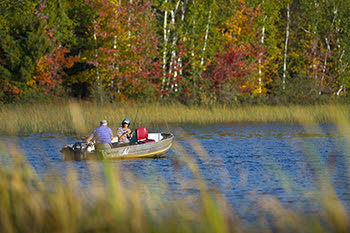
Real risk, sensible solutions
The most recent U.S. Coast Guard statistics show that drowning was the cause of death in 81% of national boating-related fatalities in 2021. Of those drownings, 83% of victims were not wearing life jackets, and two of every three victims were considered good swimmers.
“Taking time now to check your gear, brush up on boating laws and plan for safety can prevent problems later,” Wanless said. “Incidents can happen at any time, and weather can quickly affect conditions on inland waters and the Great Lakes. Familiarizing yourself and fellow boaters with safety tips and equipment can mean the difference between a perfect day on the water and a needlessly tragic outcome.”
Those born after June 30, 1996, need a boating safety certificate to operate a boat on the water. If you were born after Dec. 31, 1978, and want to operate a personal watercraft, such as a Jet Ski, you also need a valid boater education safety certificate.
The DNR offers boating safety education as an online and traditional classroom course to teach new and experienced boaters about current laws and safe operation.
Learn more about boating opportunities, safety information and other resources at Michigan.gov/Boating.
Questions? Contact Lt. Tom Wanless at WanlessT@Michigan.gov. |
|
|
We believe the outdoors is for people of all abilities. See what we’re doing to boost accessibility at parks, piers, playgrounds and your other favorite outdoor places!
|
|
State park? State forest campground? Hiking trail, boat launch, fishing spot or other outdoor inspiration? No matter what you’re looking for, find it in Your Local Outdoors.
|
|
|
